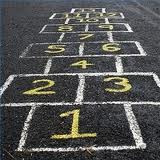"The central struggle of parenthood is to let our hopes for our children outweigh our fears." (Ellen Goodman)
Impact of Disability and Development

During the middle childhood phase of development kids are mastering many milestones. Children with ataxic CP have the damage in the brain that controls a lot of the child’s motor control. (Brody, 2005) As other children at this stage start to run, jump, and hop efficiently children with ataxic CP tend to lack that mastery of the skills. They will become steadier on their feet at a much slower rate than other children and most of the time requires some sort of walking or mobility assistive device. At this phase children with ataxic CP will also be behind in the fine motor areas such as cutting and hand writing due to the intention tremors. These problems may lead to difficulties in school. If the child is starting to fall behind due to their physical incapability’s in the class room talking with the teachers, doctors, and therapist are the best idea. The focus will then be not on how far they are starting to fall behind but how we can help the child continue to excel and enjoy school. (www.ucp.org)
Cerebral Palsy also is known to sometimes have an effect on cognitive development as well. Although it does not show up in every case it is important to understand there is a possibility. The child may still be on the cognitive level of kids younger than they are. You might notice the child falling behind in school. (Cerebral palsy: Hope," 2009) A child with a cognitive delay may show only zero or modest improvements in early school grades. Their ability to interact with peers at a normal social level may also be an indication of some sort of delay. A child that is not striving mentally at this stage might still be focusing on themselves showing very little understanding for the thought of others.
With the physical factors the child has to face now, many parts of a child's daily activities will be affected. The ability for the child to keep up with their peers in a physical setting will not be at the same level. Their motor and praxis skill will interrupt their skills to run and play in the exact same way. The physical impacts of the CP will also change how the child will go about their daily activities at home. Getting dressed may have to be done sitting down or in another adaptive way because of the lack of balance and coordination. The child’s muscle power will also interfere with the duration of each task the child partakes in. They might have to take frequent breaks because they have low muscle tone and strength. Children with CP sometimes also face visual disturbances as well. (Bud, 2011) Poor vision in one eye and can interfere with the ability to judge distance.("Cerebral palsy: Hope," 2009)
Just because the child will face some difficulties while development does not mean they cannot have a normal enjoyable middle childhood. The physical challenges may change the way the child and family have to go about it but the child can have a great, safe, and wonderful childhood.
Cerebral Palsy also is known to sometimes have an effect on cognitive development as well. Although it does not show up in every case it is important to understand there is a possibility. The child may still be on the cognitive level of kids younger than they are. You might notice the child falling behind in school. (Cerebral palsy: Hope," 2009) A child with a cognitive delay may show only zero or modest improvements in early school grades. Their ability to interact with peers at a normal social level may also be an indication of some sort of delay. A child that is not striving mentally at this stage might still be focusing on themselves showing very little understanding for the thought of others.
With the physical factors the child has to face now, many parts of a child's daily activities will be affected. The ability for the child to keep up with their peers in a physical setting will not be at the same level. Their motor and praxis skill will interrupt their skills to run and play in the exact same way. The physical impacts of the CP will also change how the child will go about their daily activities at home. Getting dressed may have to be done sitting down or in another adaptive way because of the lack of balance and coordination. The child’s muscle power will also interfere with the duration of each task the child partakes in. They might have to take frequent breaks because they have low muscle tone and strength. Children with CP sometimes also face visual disturbances as well. (Bud, 2011) Poor vision in one eye and can interfere with the ability to judge distance.("Cerebral palsy: Hope," 2009)
Just because the child will face some difficulties while development does not mean they cannot have a normal enjoyable middle childhood. The physical challenges may change the way the child and family have to go about it but the child can have a great, safe, and wonderful childhood.
